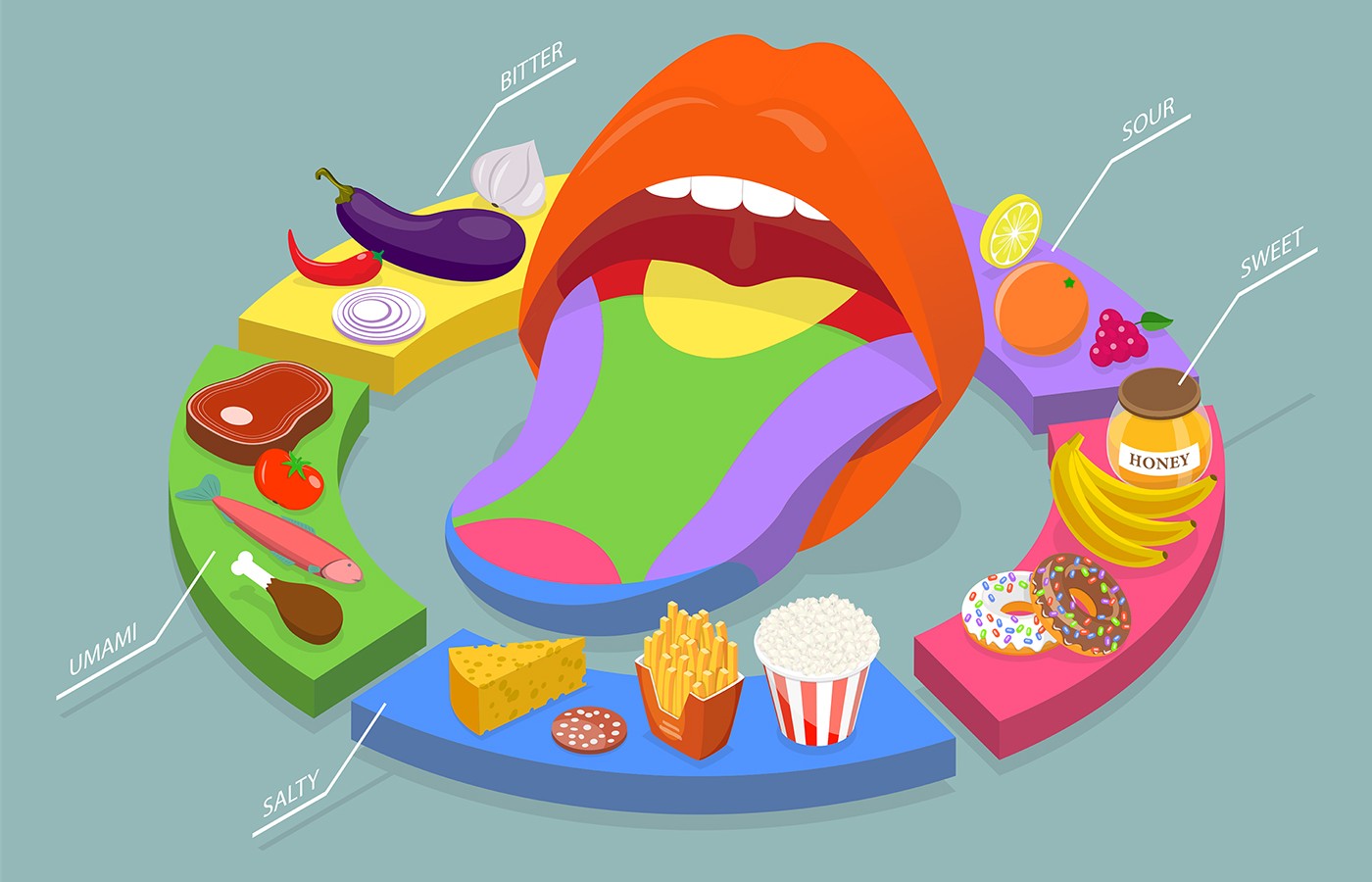Whether you accept it, avoid it or live somewhere in between, insurance coverage has become a defining issue for our profession. Patients increasingly expect to use their benefits, practitioners want to be compensated fairly for their time and expertise, and the system itself remains – at best – fragmented. The encouraging news is that coverage has expanded in meaningful ways. The challenging news is that reimbursement, across the board, remains inadequate.
The Five Tastes Plus One (Pt. 2)
In part 1, I discussed how the six tastes are made up of different combinations of the five phases that impart the therapeutic properties of herbs (and foods), allowing us to use herbal medicine more effectively and safely. Pt. 1 discussed how the sweet, sour, and salty tastes affect our bodies and our health. Now let’s discuss the pungent-aromatic, bitter-acrid, and astringent-bland tastes and how they are used in herbal medicine.
Pungent-Aromatic Taste
The pungent taste is made up of the phases of fire and air, and is similar to the aromatic taste. However, the aromatic taste is not considered to be a taste, but a temperature characteristic having more of the fire phase. The phases of the aromatic taste are fire, air, and space that are like Pungent, except more warming and dispersing with the “ability to penetrate … and revive a particular function.”1 The penetrating action is an attribute of the fire and air phases.
The fire phase conveys the quality of heat to improve digestion with a drying effect to counter dampness. The phase of air brings the qualities of lightness and movement, supporting the property of heat by inciting the fire.
Therefore, pungent-aromatic herbs improve digestion, dry dampness, break up obstructions and masses, and generally clear the system.
Bitter-Acrid Taste
The bitter taste includes the phases of space and air with the attributes of dispersion and movement. This is like Chinese medicine’s acrid taste, but with the space phase predominant, giving acrid its increased dispersing quality.
Most of the herbs labeled as acrid in Chinese medicine’s Materia Medica are cooling or cold in energy, though some have the added the phase of fire, giving them a more warming and penetrating quality. The Materia Medica states that acrid can be divided into cool and warm. “[An] acrid, warm substance can be used for externally-contracted cold; an acrid, cool substance for externally-contracted heat.”2 Therefore, the phases of the acrid taste are space and air, with the occasional addition of fire.
Though the properties of the acrid taste are the same as bitter in ayurveda, in Chinese medicine “bitter substances drain and dry”;3 therefore, the bitter taste in Chinese medicine may have some of the earth phase, giving it additional drying and draining properties.
Because air and space phases have the attributes of coldness, movement, and lightness, the bitter taste has significant cooling and dispersing effects, as well as the ability to alleviate heaviness. The cooling effect gives the bitter taste its ability to detoxify by reducing heat (infection, inflammation) and reduce fevers. The cooling quality can also help digestion by moving food through the system, keeping it from stagnating and accumulating with its dispersing or detoxifying effect.
There are many situations in which the category of bitter herbs is used to counter excess conditions. However, the bitter taste is rarely consumed. Bitter herbs can be used for conditions such as clearing heat and cooling the blood, draining fire, expelling parasites, relieving toxicity, transforming phlegm-heat, regulating qi, cleansing purgatives, releasing the exterior.
Astringent-Bland Taste
The astringent taste consists of the phases of air and earth, which have drying properties. The bland taste in Chinese medicine consists of earth and air. This is like astringent except the earth phase is more predominant. The larger proportion of the drying earth phase absorbs fluids. The heaviness of the earth phase also drains water downward. The air phase helps move water out of the body. In other words, these herbs act as diuretics.
The astringent herbs can alleviate excessive secretions such as diarrhea, bleeding, and sweating, tighten and constrict tissues, and raise prolapsed organs.
The Eight Effects / Functional Principles of the Six Tastes
| Effect | Sweet | Sour | Salty | Pungent-Aromatic | Bitter-Acrid | Astringent-Bland |
| Cooling | X | X | X | |||
| Heating | X | X | X | |||
| Drying | X | X | X | X | ||
| Moistening | X | X | ||||
| Upward | X | X | X | |||
| Downward | X | X | X | |||
| Inward | X | X | ||||
| Outward/Dispersing | X | X |
The table above can be used to help design or modify an herbal formula for a bodily condition. Most herbs / foods are a combination of primarily two tastes, with one taste predominating. It then becomes a matter of knowing the effects of the herbs and combining them in a manner that achieves the effect you are trying to accomplish without unwanted side effects to your patient.
References
- Bensky D, Gamble A. Chinese Herbal Medicine Materia Medica. Seattle: Eastland Press, 1990: p. xvii.
- Bensky D, et al. Op Cit, p. 7.
- Bensky D, et al. Op Cit, p. xvi.



